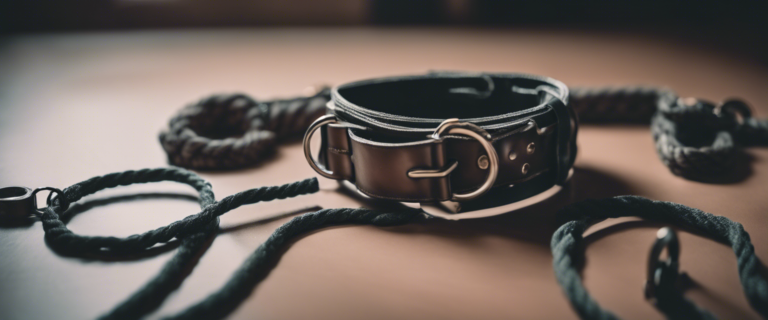Exploring Lesbian Sexuality: A Comprehensive Guide

Key Highlights
- Lesbian sexuality encompasses a wide spectrum of identities, attractions, and behaviors.
- Understanding and embracing lesbian identity is an important part of self-accept and personal growth.
- Lesbian relationships and sexual health require open communication, consent, and safe sex practices.
- Representation of lesbian women in media and society is crucial for visibility and acceptance.
- Legal and social rights for lesbian women vary worldwide, and there are ongoing challenges in achieving equality.
- FAQs: What does it mean to identify as lesbian? What are common misconceptions about lesbian sexuality? How can communication enhance the sexual experience in a lesbian relationship? What are safe sex practices for lesbians? Are there specific health considerations for lesbians engaging in sexual activity?
Introduction
Lesbian sexuality is a rich and diverse aspect of human experience. It encompasses a wide spectrum of identities, attractions, and behaviors that are unique to lesbian women. Understanding and exploring lesbian sexuality is not only important for individuals who identify as lesbian, but also for society as a whole. This comprehensive guide aims to provide an in-depth understanding of lesbian sexuality, debunk common myths and misconceptions, and offer practical advice for navigating lesbian relationships and sexual health. From understanding lesbian identity and its formation to exploring the cultural and historical perspectives, this guide covers a wide range of topics that will help readers gain a deeper understanding of lesbian sexuality in all its complexities, including the topic of trans identity and homosexuality. Whether you are a lesbian woman looking for information and support, or simply curious about lesbian sexuality, this guide is a valuable resource. So, let’s dive in and explore the diverse and beautiful world of lesbian sexuality.
Understanding Lesbian Identity
Lesbian identity is a fundamental aspect of a person’s sexual and romantic orientation. It is important to understand that sexual orientation is not a choice, but rather an inherent part of who someone is. Lesbian women are attracted to other women romantically, emotionally, and sexually. They may identify as gay, lesbian, queer, nonbinary, bi, or any other term that resonates with their personal experience. Gender identity is separate from sexual orientation, and lesbian women may identify as cisgender or transgender. Nonbinary individuals, who do not identify as strictly male or female, can also identify as lesbian if they are attracted to other nonbinary individuals. It is crucial to respect and affirm each individual’s self-identified lesbian identity.
The Spectrum of Lesbian Identities
The spectrum of lesbian identities is vast and diverse. Lesbian women may have varying attractions, preferences, and experiences. Some lesbian women may identify as exclusively attracted to women, while others may experience a range of attractions including bisexual or pansexual orientations. It is important to recognize and respect the unique experiences of each individual within the lesbian community, including those who identify as ace. Romantic attraction, emotional connection, and sexual identity are personal and can vary from person to person. By embracing the diversity of lesbian identities, including those who identify as ace, we create a more inclusive and understanding society.
Factors Influencing Lesbian Identity Formation
The formation of lesbian identity is influenced by various factors, including personal experiences, cultural norms, and societal expectations. Many lesbian women discover their sexual orientation during adolescence, a period of self-exploration and identity formation. Compulsory heterosexuality, which assumes that everyone is heterosexual by default, can delay the recognition and acceptance of lesbian identity. It is important to create safe and supportive environments for young lesbian women to explore their sexuality and develop a positive sense of self. Sexual attraction, romantic relationships, and personal growth play a significant role in the formation of lesbian identity.
Cultural and Historical Perspectives on Lesbian Sexuality
The cultural and historical perspectives on lesbian sexuality have evolved over time. While lesbian sex and relationships have existed throughout history, their portrayal and acceptance have varied across different cultures and time periods. Ancient civilizations, such as Greece and Rome, had diverse views on same-sex relationships, including lesbianism. In modern history, lesbian identity has faced stereotypes and discrimination. Understanding the cultural and historical context of lesbian sexuality helps us appreciate the progress made and the challenges that still exist today.
Lesbian Representation in Ancient Civilizations
Lesbianism, or same-sex relationships between women, has been documented in ancient civilizations such as Greece and Rome. The poet Sappho from the island of Lesbos in Greece is one of the most famous examples of a lesbian figure in ancient literature. While the exact nature of lesbian relationships in these civilizations is debated, it is clear that same-sex desire and love between women were acknowledged and celebrated to some extent. Many works of art and literature depict women in affectionate and intimate relationships with each other. This historical representation of lesbianism challenges the notion that same-sex attraction is a modern phenomenon. It serves as a reminder of the diversity of human sexuality throughout history.
Evolution of Lesbian Identity in Modern History
In modern history, lesbian identity has undergone significant changes and challenges. The 19th-century sexologists categorized lesbians as women who did not adhere to traditional gender roles, classifying them as mentally ill. However, lesbian women in Europe and the United States responded to discrimination by creating subcultures and communities. With the rise of second-wave feminism and increased scholarship on women’s history and sexuality in the late 20th century, the definition of lesbian broadened. Lesbian identity became more inclusive and encompassed a range of experiences and expressions. Today, stereotypes surrounding lesbian identity persist, but there is also greater visibility and acceptance of lesbian women as a noun in society.
Debunking Common Myths about Lesbian Sexuality
Misconceptions and stereotypes about lesbian sexuality are prevalent in society. It is important to debunk these myths and provide accurate information about lesbian sex and relationships. Some common misconceptions include the belief that all lesbians engage in certain sexual behaviors, that lesbian relationships are not as valid or serious as heterosexual relationships, and that lesbian sex is solely focused on oral sex. By challenging these myths and providing accurate information about sexual contact between women, or the lack thereof, we can promote understanding, acceptance, and respect for lesbian women and their experiences, especially for those who are exploring their sexuality for the first time.
Correcting Misconceptions about Lesbian Relationships
Misconceptions about lesbian relationships stem from stereotypes and lack of knowledge. One common misconception is that lesbian relationships are less committed or serious than heterosexual relationships. In reality, lesbian couples experience the same range of emotions, challenges, and joys as any other couple. Lesbian relationships are based on love, trust, and mutual support, just like any healthy relationship. Another misconception is that all lesbian relationships involve the same sexual practices, which is not true. Sexual preferences and behaviors vary among individuals and couples, regardless of their sexual orientation. It is important to approach lesbian relationships with an open mind and respect for each individual’s preferences and boundaries.
The Reality of Lesbian Sexual Health
Lesbian sexual health is an important aspect of overall well-being. Like any sexual activity, lesbian sex carries some risks, including the transmission of sexually transmitted infections (STIs). Safe sex practices, such as using barrier methods like dams or gloves and regular STI testing, can help reduce these risks. It is also important to prioritize communication and consent in sexual activities. Regular gynecological exams and breast health checks are recommended for all women, including lesbian women. By addressing the unique sexual health needs of lesbian women and promoting open dialogue, we can ensure the well-being and safety of all individuals in lesbian relationships. Additionally, understanding the basics of HTML can help individuals navigate online resources and access important information about sexual health, such as the CDC’s fact sheet on STI incidence, prevalence, and cost in the United States.
Navigating Lesbian Relationships
Navigating lesbian relationships requires open communication, consent, and understanding. Lesbian couples, like any other couple, face challenges and joys in their relationships. Effective communication is key to building a strong foundation and resolving conflicts. Consent should always be a priority in sexual activities, and both partners should feel comfortable and respected. Lesbian dating can also present its own unique challenges, such as societal stereotypes and misconceptions. By addressing challenges and seeking support, lesbian couples can create healthy and fulfilling relationships.
Communication and Consent in Lesbian Relationships
Communication and consent are essential in any relationship, including lesbian relationships. Open and honest communication builds trust, understanding, and emotional intimacy between partners. Discussing desires, boundaries, and expectations can help create a safe and satisfying sexual experience. Consent is crucial in all sexual activities and should be given freely and enthusiastically by all parties involved. It is important to remember that consent is an ongoing process and can be withdrawn at any time. By prioritizing communication and consent, lesbian couples can foster a healthy and fulfilling relationship based on mutual respect and understanding.
Challenges and Solutions in Lesbian Dating
Lesbian dating can present its own unique challenges. Stereotypes and misconceptions about lesbian relationships can create barriers to finding compatible partners and establishing meaningful connections. Additionally, lesbian women may face discrimination and prejudice in dating and relationships, making it important to seek out safe and inclusive spaces. However, there are solutions and strategies for overcoming these challenges. Creating a supportive network of friends and allies, exploring LGBTQ+ social spaces and events, and using dating apps and online platforms specifically for the lesbian community can help expand opportunities for meeting potential partners. It is also important to be open-minded, patient, and authentic in dating endeavors. By navigating these challenges with resilience and self-confidence, lesbian women can find fulfilling and loving relationships within the LGBT community.
Exploring Lesbian Sexuality Safely and Healthily
Exploring lesbian sexuality safely and healthily is of utmost importance. Safe sex practices, regular sexual health check-ups, and open communication are key to maintaining sexual well-being. It is essential to prioritize consent and establish clear boundaries in sexual activities, including understanding and respecting each partner’s genitals, including the penis. Understanding and respecting each partner’s desires, preferences, and comfort levels, including their unique genitals, are crucial for a positive and satisfying sexual experience. By taking proactive steps to ensure sexual health, lesbian women can enjoy fulfilling and pleasurable sexual relationships.
Understanding Consent and Boundaries
Consent and boundaries are vital aspects of any sexual relationship, including lesbian relationships. Consent means giving explicit permission for sexual activities, and it should be enthusiastic, ongoing, and freely given by all parties involved. It is important to respect each person’s boundaries and never assume consent based on previous experiences or relationships. Communication is key in establishing consent and understanding each partner’s desires, comfort levels, and limits. It is crucial to create a safe and non-judgmental environment where partners can openly discuss their boundaries and preferences. By prioritizing consent and respecting boundaries, lesbian couples can cultivate a healthy and fulfilling sexual relationship.
Resources for Safe Lesbian Sex Practices
There are various resources available to help lesbian women explore safe sex practices. LGBTQ+ community centers, sexual health clinics, and online platforms offer information and support for lesbian sexual health. These resources provide guidance on safe sex practices, such as using barrier methods like dental dams or gloves during oral sex, as well as information on regular STI testing and prevention. It is important to stay informed about sexual health and seek professional advice when needed, especially when it comes to protecting the vagina from potential infections or diseases. By accessing these resources, lesbian women can prioritize their sexual well-being and engage in sexual activities confidently and safely, including practicing safe oral sex with the use of a dildo or dental dam.
The Importance of Representation in Media and Society
Representation of lesbian women in media and society is crucial for visibility and acceptance. Positive representation helps challenge stereotypes and misconceptions, promoting understanding and empathy. It also provides role models and inspiration for lesbian individuals, fostering a sense of belonging and self-acceptance. By accurately portraying lesbian experiences and relationships, media can contribute to a more inclusive and diverse society that values and respects the LGBTQ+ community.
Impact of Positive Lesbian Representation
Positive representation of lesbian women in media has a significant impact on both individuals and society. Seeing relatable and authentic portrayals of lesbian experiences helps challenge stereotypes and misconceptions, promoting understanding, empathy, and acceptance. Positive representation also provides role models for young lesbian individuals, inspiring self-confidence and self-acceptance. It fosters a sense of belonging and community among lesbian women, creating a supportive and inclusive society where diversity is celebrated. By amplifying positive lesbian representation in media, we can contribute to a more inclusive and equitable world.
Current State of Lesbian Visibility in Media
The current state of lesbian visibility in media varies, with both progress and challenges. While there have been significant improvements in recent years, lesbian representation still lags behind other identities in terms of quantity and quality. Lesbian characters are often sidelined or subjected to harmful stereotypes. However, there are positive examples of lesbian representation in media, such as well-developed and nuanced characters in TV shows, movies, and literature. The rise of online platforms and streaming services has also provided opportunities for diverse and authentic lesbian storytelling, increasing visibility for gay people. Continued advocacy and demand for inclusive representation can bring about further positive change for lesbian visibility in media.
Legal and Social Rights of Lesbian Women
Lesbian women have the right to legal and social equality, although the extent of these rights can vary worldwide. It is important to recognize and address the ongoing challenges faced by lesbian women in achieving equal rights and protections. Legal progress has been made in many countries, including recognition of same-sex relationships and anti-discrimination laws. However, there are still significant barriers to full equality, such as discrimination, prejudice, and lack of representation. By advocating for equal rights and challenging discriminatory practices, we can work towards creating a more inclusive and just society for all lesbian women.
Overview of Legal Progress Worldwide
Legal progress regarding the rights of lesbian women has been achieved in many countries around the world. Same-sex marriage or civil partnership recognition, anti-discrimination laws, and legal protections against hate crimes are some of the advancements that have been made. However, the extent of legal rights and protections for lesbian women varies significantly from country to country. In some nations, same-sex relationships are still criminalized, and discrimination and violence against lesbian individuals persist. It is also important to recognize that legal progress for LGBTQ+ individuals is not limited to lesbian women, but also includes gay men, bisexual individuals, transgender individuals, and intersex individuals. By supporting organizations and initiatives that fight for LGBTQ+ rights, we can contribute to a more inclusive and equitable world for all members of the community, including gay men.
Ongoing Challenges in Achieving Equality
Despite significant progress, lesbian women continue to face ongoing challenges in achieving legal and social equality. Discrimination, prejudice, and violence against lesbian individuals persist in various parts of the world. Legal protections and anti-discrimination laws may be inadequate or nonexistent in many countries. Negative stereotypes and misconceptions about lesbian women also contribute to barriers in achieving full equality. It is important to challenge these challenges by advocating for LGBTQ+ rights and promoting understanding and acceptance. By raising awareness, supporting organizations, and fostering inclusive communities, we can work towards creating a world where lesbian women are valued, respected, and treated equally.
Conclusion
Lesbian sexuality is a diverse and rich tapestry woven through history, culture, and personal experiences. By debunking myths, navigating relationships with communication and consent, and exploring sexuality safely, we empower ourselves and our community. Representation in media and society plays a crucial role in shaping perceptions and promoting equality. Let’s continue to celebrate diversity, challenge stereotypes, and advocate for the legal and social rights of lesbian women worldwide. Share this comprehensive guide on social media to spread awareness and promote inclusivity. Together, we can foster a world where every individual feels seen, heard, and valued.
Frequently Asked Questions
What Does It Mean to Identify as Lesbian?
Identifying as lesbian means being romantically, emotionally, and sexually attracted to other women. It is a personal and individual experience of sexual orientation and can encompass a range of identities and expressions within the lesbian community.
What are some common misconceptions about lesbian sexuality?
Common misconceptions about lesbian sexuality include the belief that all lesbians engage in certain sexual behaviors or that lesbian relationships are not as valid or serious as heterosexual relationships. It is important to challenge these myths and promote understanding.
How can communication enhance the sexual experience between partners in a lesbian relationship?
Effective communication is crucial in enhancing the sexual experience between partners in a lesbian relationship. Openly discussing desires, boundaries, and expectations can create a safe and pleasurable sexual environment, fostering intimacy and connection.
What are some safe sex practices for lesbians to consider?
Safe sex practices for lesbians include using barrier methods like dental dams or gloves during oral sex, regular STI testing, and open communication about sexual health. These practices help reduce the risk of sexually transmitted infections.
Are there any specific health considerations for lesbians engaging in sexual activity?
Lesbians engaging in sexual activity should prioritize regular gynecological exams and breast health checks, just like all women. It is important to stay informed about sexual health and seek professional advice when needed.





